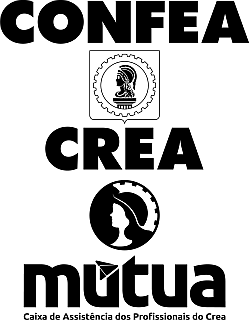Adhesion at asphalt-aggregate interface through surface energy
DOI:
https://doi.org/10.14295/transportes.v28i2.2071Palavras-chave:
Moisture Damage, Adhesion, Cohesion, Limestone, Sandstone, Surface Free Energy, Humidity Damage Index(IDH).Resumo
One of the most common problems pavements have is the loss of adhesion and cohesion due to moisture damage. Tropical countries and rainy seasons are some of the causes for this type of distress on roads. Another factor that has high influence in this damage is the mineralogy of the aggregate. This research shows the results of adhesion and cohesion between the aggregates from a limestone quarry and two types of sandstones from different quarries, highly used for roads projects from Colombia, and the asphalt 60-70 (1/10) mm, same PG58-22. For determining the adhesion and cohesion, Bitumen Bond Strength tests were made for dry and wet conditions. In addition, the Surface Free Energy was measured for the aggregates and the asphalt. The results indicated that those type of aggregates are highly susceptible to moisture damage, due all values of humidity Index Damage (HDI) were less than 0,5. This indicates that it is necessary to use modifiers for controlling the stripping of the pavements due to Moisture Damage.
Downloads
Referências
Bhasin, A., Little, D. N., Vasconcelos, K. L., & Masad, E. (2007). Surface Free Energy to Identify Moisture Sensitivity of Materials for Asphalt Mixes. Transportation Research Record, 2001(1), 37–45. DOI: 10.3141/2001-05
Caro-Spinel S, Masad E, Bhasin A, Little DN. “Moisture susceptibility of asphalt mixtures, Part 1: mechanisms”. Int J Pavement Eng - INT J PAVEMENT ENG. 2008;9(2):81-98
Kiggundu, B. M., & Roberts, F. L. (1988).” Stripping in HMA mixtures: State-of-the-art and critical review of test methods” (No. NCAT Report No. 88-2). Auburn, AL: National Center for Asphalt Technology.
Terrel, R L., Saleh A, & Todd V. S. (2011). “Equipment and Method for Environmental Testing of Bituminous Specimens (Con-cesión)”. Oregon: Oregon State University.
Nicholson, V. (1932). “Adhesion tension in asphalt pavements, its significance and methods applicable in its determination (Monograph)”. Highway Research board Bibliography.
McCann, M., Anderson-Sprecher, R., & Thomas, K. P. (2005). “Statistical comparison between SHRP aggregate physical and chemical properties and the moisture sensitivity of aggregate-binder mixtures”. Road Materials and Pavement Design, 6(2), 197-215.
Solaimanian, M., Fedor, D., Bonaquist, R., Soltani, A., & Tandon, V. (2006). “Simple performance test for moisture damage prediction in asphalt concrete (with discussion)”. Journal of the Association of Asphalt Paving Technologists, 75.
Moraes, R., Velasquez, R., & Bahia, H. (2011). “Measuring the effect of moisture on asphalt-aggregate bond with the bitumen bond strength test”. Transportation Research Record: Journal of the Transportation Research Board, (2209), 70-81.
Figueroa, A., Velásquez, R., Reyes, F., & Bahia, H. (2013). “Effect of Water Conditioning for Extended Periods on the Properties of Asphalt Binders”. Transportation Research Record: Journal of the Transportation Research Board, (2372), 34-45.
Aguiar-Moya, J. P., Loria-Salazar, L., Salazar, J., Villegas, E., Corrales-Azofeifa, J. P., Hajj, E. Y., & Center, W. R. S. (2013). Evaluation of Adhesion Properties of Costa Rican Asphalt Mixtures using the Bitumen Bond Strength (BBS) and Contact Angle Measurement Tests. En 92th Annual meeting of the transportation research board, Washington, USA.
Chaturabong, P., & Bahia, H. U. (2018). Effect of moisture on the cohesion of asphalt mastics and bonding with surface of aggregates. Road Materials and Pavement Design, 19(3), 741-753.
Schrader, M. E. (1995). Young-dupre revisited. Langmuir, 11(9), 3585-3589.
Bhasin, A., Little, D., Vasconcelos, K., & Masad, E. (2015). Surface free energy to identify moisture sensitivity of materials for asphalt mixes. Transportation Research Record: Journal of the Transportation Research Board, 2001, 37-45.
Caro-Spinel, S., & Alvarez-Lugo, A. E. (2011). Evaluación de la susceptibilidad al daño por humedad de mezclas asfálticas empleando propiedades termodinámicas. Revista Facultad de Ingeniería, (58), 95-104.
Downloads
Publicado
Como Citar
Edição
Seção
Licença
Ao submeter um manuscrito para publicação neste periódico, todos os seus autores concordam, antecipada e irrestritamente, com os seguintes termos:
- Os autores mantém os direitos autorais e concedem à Transportes o direito de primeira publicação do manuscrito, sem nenhum ônus financeiro, e abrem mão de qualquer outra remuneração pela sua publicação pela ANPET.
- Ao ser publicado pela Transportes, o manuscrito fica automaticamente licenciado sob a Licença Creative Commons CC BY 4.0. Esta licença permite o seu compartilhamento com reconhecimento da autoria e da publicação inicial neste periódico.
- Os autores têm autorização para assumir contratos adicionais separadamente, para distribuição não exclusiva da versão do trabalho publicada neste periódico (por ex.: publicar em repositório institucional ou como capítulo de livro), com reconhecimento da publicação inicial na Transportes, desde que tal contrato não implique num endosso do conteúdo do manuscrito ou do novo veículo pela ANPET.
- Os autores têm permissão e são estimulados a publicar e distribuir seu manuscrito online (por ex.: em repositórios institucionais ou na sua página pessoal) depois de concluído o processo editorial. Como a Transportes é de acesso livre, os autores são estimulados a usar links para o DOI do artigo nesses casos.
- Os autores garantem ter obtido a devida autorização dos seus empregadores para a transferência dos direitos nos termos deste acordo, caso esses empregadores possuam algum direito autoral sobre o manuscrito. Além disso, os autores assumem toda e qualquer responsabilidade sobre possíveis infrações ao direito autoral desses empregadores, isentando a ANPET e a Transportes de toda e qualquer responsabilidade neste sentido.
- Os autores assumem toda responsabilidade sobre o conteúdo do manuscrito, incluindo as devidas e necessárias autorizações para divulgação de dados coletados e resultados obtidos, isentando a ANPET e a Transportes de toda e qualquer responsabilidade neste sentido.









